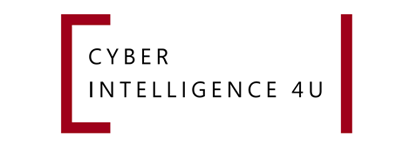Cyber Risk Management Certificate Program - AT&T
-
 Online
Online
-
 On-Demand
On-Demand
-
 Fast Track
Fast Track
-
 Pace University Certified
Pace University Certified
Cyber is digital. In 2001, 10% of a business was digital, today 85% of an organization’s value is digital. The cyber risk managers understand that the cybercriminal attacks the digital assets and must have a program that can quantify exposures. This course is based on over five years of research with the Fortune 1000 and cyber insurance industry to bridge the gap between the business and cyber teams.
What you will learn
We will cover introductory content on financial impacts and compliance related to Cybersecurity. The course covers terminology, regulations, insurance, cyber risk and reporting.
Learn “best practices” to lead your company in cybersecurity, including:
- Knowledge of the latest cybersecurity risks and regulations
- Cyber financial risk quantification and its uses for companies
- Regulatory challenges to prepare for compliance
- Cyber insurance strategy
Course Book:
Managing Cyber Risk, from Routledge Publishing
During labs, students will implement digital asset inventories, risk models for quantification, and utilize reports for essential board reporting. The total time committed to labs is about 20% of the course.
Lab 1: Digital Asset Inventory
Lab 2: Regulatory Management
Lab 3: Financial Cyber Risk Quantification Modeling
Lab 4: Cyber Insurance Calculations
Lab 5: Board reporting and strategy
Key Takeaways:
- Develop KPIs that demonstrate financial impact of cyber events.
- Relates people, process and tools in cybersecurity to regulations and cyber risk.
- Relates financial metrics to protecting digital assets.
- Provides a holistic view of cyber, privacy and risk.
Skills Learned:
- Digital Asset Methodology
- Understand and analyze risk in the cloud and on premise
- Understand the role of cyber insurance
- Get up to speed quickly on emerging technology security issues and terminology
What you will receive:
- Hands-on lab for cyber risk quantification
- Weekly chats with the chair to ask any questions
- Dedicated program manager to assist with technical issues
- Electronic courseware containing the entire course content
- Course books – available for purchase
- Access to repeatable interactive hands-on labs
- MP3 audio files of the complete course lecture
Who should attend:
- Cybersecurity Risk Managers, CISOs, Cyber Insurance Actuaries
- Directors looking to understand their fiduciary duties.
- C-level executives who need to provide data to the board.
Syllabus
Module 1: Introduction to Digital Assets
Module Description
This module provides an introduction to the digital asset approach to cyber risk management. Digital asset metrics can be used by boards and CISOs to show cybersecurity from a business point of view. The course is based on three years of research with the Fortune 1000 and cyber insurance industry to understand why businesses cannot be cyber resilient and how to get the business and cyber team to speak the same language. In 2001, 10% of a business was digital, today 85% of an organization’s value is digital. The module focuses on building student understanding of cybersecurity from how cyber evolved out of information technology, addresses key cyber-related business and technical roles, demonstrates the consequences of poor cyber hygiene and reviews cybersecurity trends.
In addition to the evolution of cyber, students learn to communicate in the language of cybersecurity, study data breaches, attack surfaces, enterprise threats of today and enterprise cybersecurity programs components.
Each student is required to do a lab assignment, which is an inventory of digital assets of their organization or a fictious or public organization. The lab uses the ValuRisQ platform.
Digital Asset Inventories contain about a dozen attributes needed for cyber risk quantification and scoring that will be performed in later modules. The digital asset inventory aims at identifying crown jewel assets and validating the key attributes used in cyber risk scoring related to the asset behavioral and user behavioral analytics.
Here are the main digital asset objectives found in organizations:
Systems – Sets of technologies purchased or developed by organizations for specific business purposes. Relates to data exfiltration metrics.
Technologies – computer related components that typically consist of hardware and software, endpoints, databases, messaging and devices. Relates to technology risks, assessments and systems.
Processes – a set of digital rules that are utilized by one or more systems to take inputs, transform them and produce outputs that are reported or utilized by other systems. Relates to business interruption exposures and risks.
Data Types – information that is processed and stored. Data can be classified into different types including privacy, credit card, intellectual property, customer data, supply chain data, etc. and relates to regulatory exposures.
Module Grade
Each student is expected to satisfy the following requirements:
- Quizzes (30%)
- Digital Asset Lab (70%)
Module 2: Cyber Risk Exposures - Quantification
Module Description
Cyber risk exposures are quantified amounts of financial impacts from a data breach, business interruption or regulator. This module provides an introduction to the design of cybersecurity risk algorithms and their usage in privacy, compliance, cyber risk management and cyber insurance. Modeling includes data exfiltration due to malware or misconfiguration, business interruption due to ransomware or denial of service attacks and regulatory exposures.
Regulatory exposures covered are those that can be levied by the Department of Health and Human Services for the Healthcare Information Portability and Accounting Act (HIPAA), the Payment Card Security Council for the Payment Card Industry Data Security Standard (PCI-DSS), the European Union Supervisory Authority for the General Data Protection Regulation (GDPR), the Attorney General of California for the California Consumer Protection Act (CCPA) and more.
Students learn how to associate the quantification metrics to use cases for monitoring digital asset risk, identifying hidden exposures and cyber insurance limits and sub-limits used in the board reporting.
Students are required to do a cyber risk exposure lab using the ValuRisQ product.
Module Grade
Each student is expected to satisfy the following requirements:
- Quizzes (30%)
- Risk Modeling Exposure Lab (70%)
Module 3: Inherent Cyber Risk Scoring
Module Description
Inherent cyber risk is the risk without the controls in place. It is raw risk, or as if there is zero percent effectiveness of controls. We also call this cybergeddon risk. This module provides an introduction to the theory, and algorithms to measure inherent cyber risk. Students learn how to measure user and asset behavioral analytics to provide insight into the inherent riskiness of a digital asset.
In this module, students will understand how digital assets, protection mechanisms and user behaviors work in concert to measure likelihood. Over 20 different asset and user behavior attributes and protection mechanisms are introduced.
Students will explore the attributes related to data privacy and understand how to measure integrity and confidentiality of data.
Students are required to do a cyber risk scoring lab using the ValuRisQ product.
Module Grade
Each student is expected to satisfy the following requirements:
- Quizzes (30%)
- Inherent Cyber Risk Lab (70%)
Module 4: Security Control Assessments
Module Description
Security Control Assessments are not risk assessments. They are a test of the security controls required to be in place for the company. This module provides a deep dive into cybersecurity control frameworks and their relationship to inherent cyber risk. Students will learn all the security controls that are required to be in place to ensure integrity, confidentiality and availability. Students will learn the means to demonstrate the effectiveness of the cybersecurity controls and to identify the trends and gaps across the digital assets.
In this module, students will learn the requirements and which control tests are required and how to map these requirements across frameworks. Students create algorithms to show the effectiveness of the cybersecurity controls and their relationship to inherent cyber risk.
Students are required to do a control assessment lab using the ValuRisQ product.
Here are the main control assessment frameworks covered in the module:
- NIST Cybersecurity Framework
- NIST 800-53
- ISO 27001
- COBIT 5
- ITIL 4
- PCI-DSS
Module Grade
Each student is expected to satisfy the following requirements:
- Quizzes (30%)
- NIST Cybersecurity Framework Lab (70%)
Module 5: Residual Cyber Risk Scoring
Module Description
Cyber risk increases when there is a weakness in a system, incident or threat to the data.
Residual cyber risk is the risk with cyber controls in place and uses data that is ingested from cybersecurity tools such as vulnerabilities from a vulnerability management scanner (VMS), security incident event management (SIEM) system, or advanced persistent threat (APT) technologies.
This module provides a deep dive into the digital asset relationships of technologies and their weaknesses, data breaches, business interruptions, and attackers malicious acts. Students create residual risk algorithms based on the type of data that the cybersecurity tool provides.
Residual cyber risk modeling is taught to demonstrate when cyber risk rises above thresholds based on the cyber risk tolerances and asset classifications.
Students are required to do a residual risk lab using the ValuRisQ product.
The module covers the main cybersecurity tool data types including:
- Vulnerability management scanner (VMS)
- Security incident event management (SIEM) system
- Advanced persistent threat (APT) technologies
Module Grade
Each student is expected to satisfy the following requirements:
- Quizzes (30%)
- Residual Cyber Risk Lab (70%)
Module 6: Board Reporting
Module Description
Providing metrics to the board that are digestible and actionable is the job of the cyber risk manager. Without tone at the top there is not enough support to have an effective cybersecurity program. This module provides a board reporting metrics that are based on the data that the student developed in the previous five modules.
The module focuses on the key elements of board reporting including:
- Demonstration of protection of the digital assets – Cyber Program Effectiveness
- Vendor cyber risk exposures and cyber program gaps
- M&A due diligence
- Cyber insurance limit and sublimit needs
In this module, students will utilize the ValuRisQ platform to create a board report that includes:
Digital Asset Cyber Risk Program Effectiveness
- What are our most valuable digital assets? Which ones are crown jewels?
- How much financial exposure do we have related to a data breach, ransomware, business interruptionand regulatory loss?
- How much hidden exposure do we have?
- How do the digital assets compare in terms of their cyber risk?
- Which digital assets are above their risk thresholds? By how much and why?
- How effective is our cyber program?
- What are the gaps in our cyber program?
- What initiatives should we prioritize to lower risk?
- What is our cyber resiliency and how do we increase it?
- Do we have enough cyber budget?
- Do we have enough resources and how do we prioritize them?
Cyber Risk Transference
- Do we have enough cyber insurance? How much do we need exactly?
- Are our sub-limits on ransomware, business interruption and regulatory loss enough?
- What is our ransomware strategy?
Vendor Cyber Risk
- What relationships do we have with vendors associated to our digital assets?
- How much financial exposure and cyber risk do we have with these third-parties? How can we reduce it?
- How effective are the vendors’ cyber controls?
- How can we continuously monitor a risky vendor?
M&A Cyber Risk
- We are planning to sell the company – how does our cyber resiliency impact our acquisition price?
- We are planning to buy a company – what financial exposure will we inherit? How effective is their cyber program?
Module Grade
Each student is expected to satisfy the following requirements:
- Quizzes (30%)
- Board Report (70%)
Certification
You will get a certification in Cyber Risk Management Program from Pace University.
Tech Requirements
- Internet access
- Mobile phone for two-factor authentication
All labs in this course are focused on using our browser. We recommend Edge or Google Chrome.
Pricing and Details:
No prerequisite or experience necessary. Course can be completed over a 3 month period and will take an estimated 20 hours to complete.

